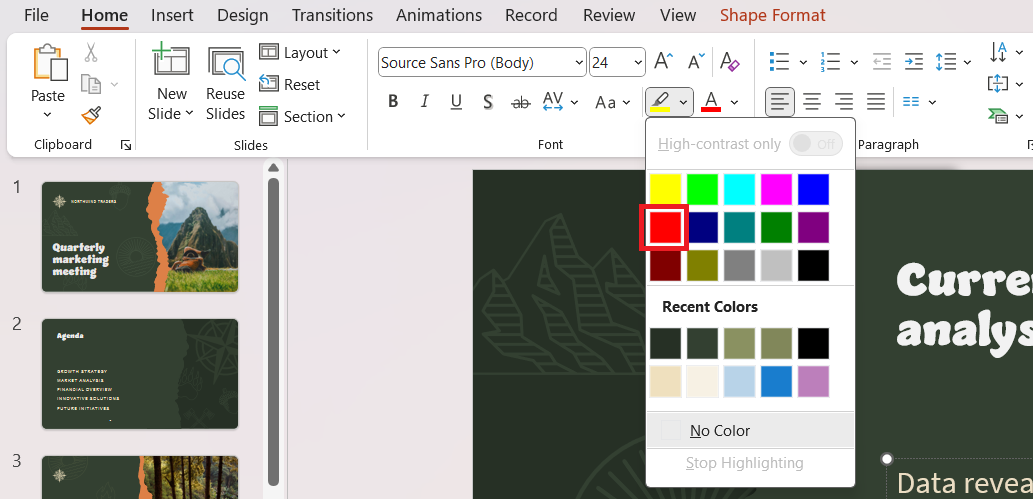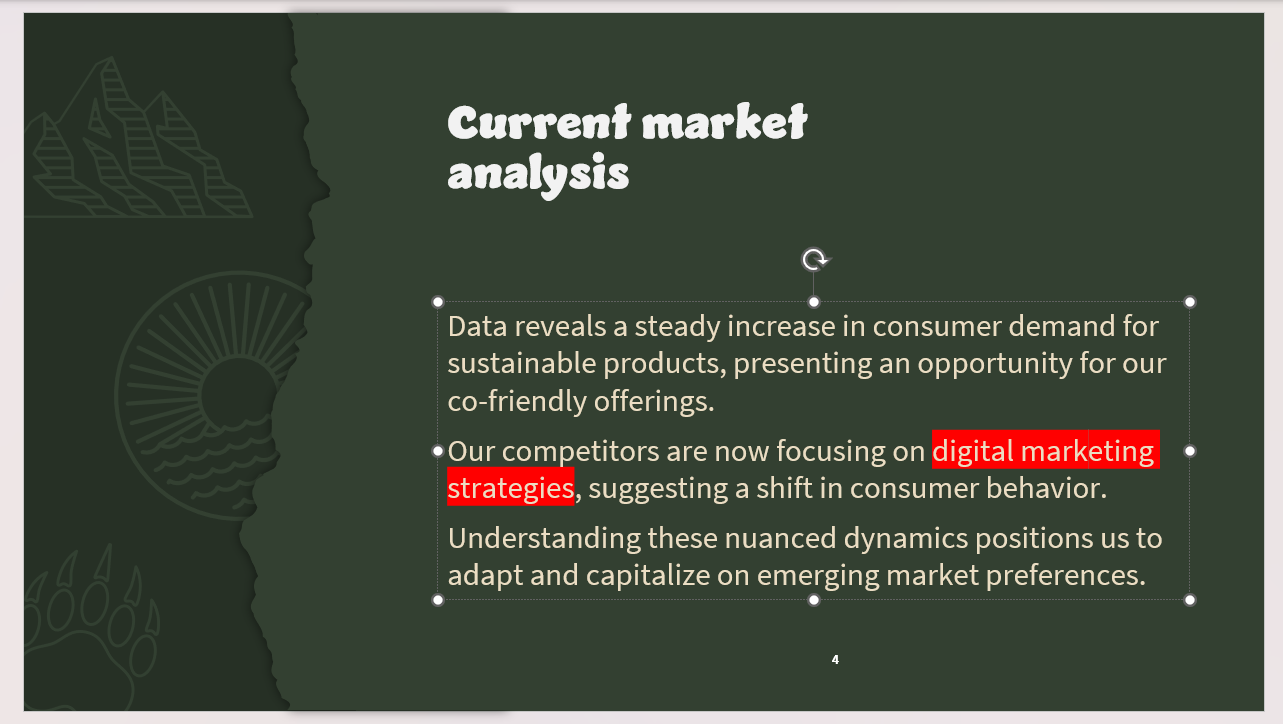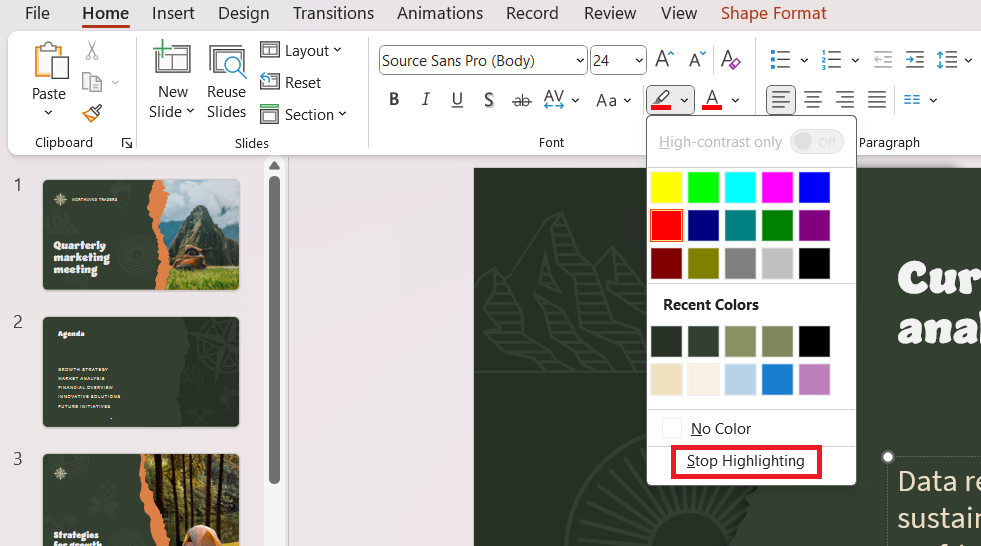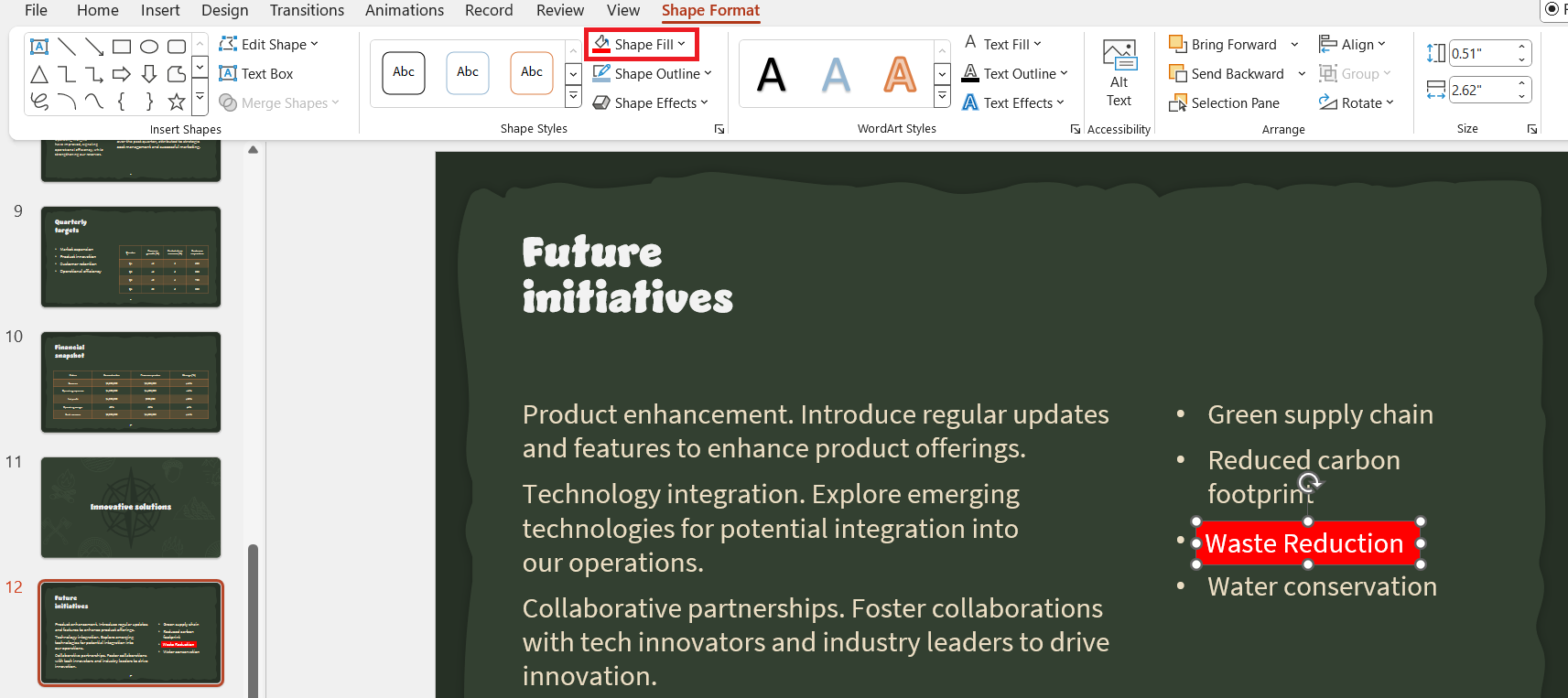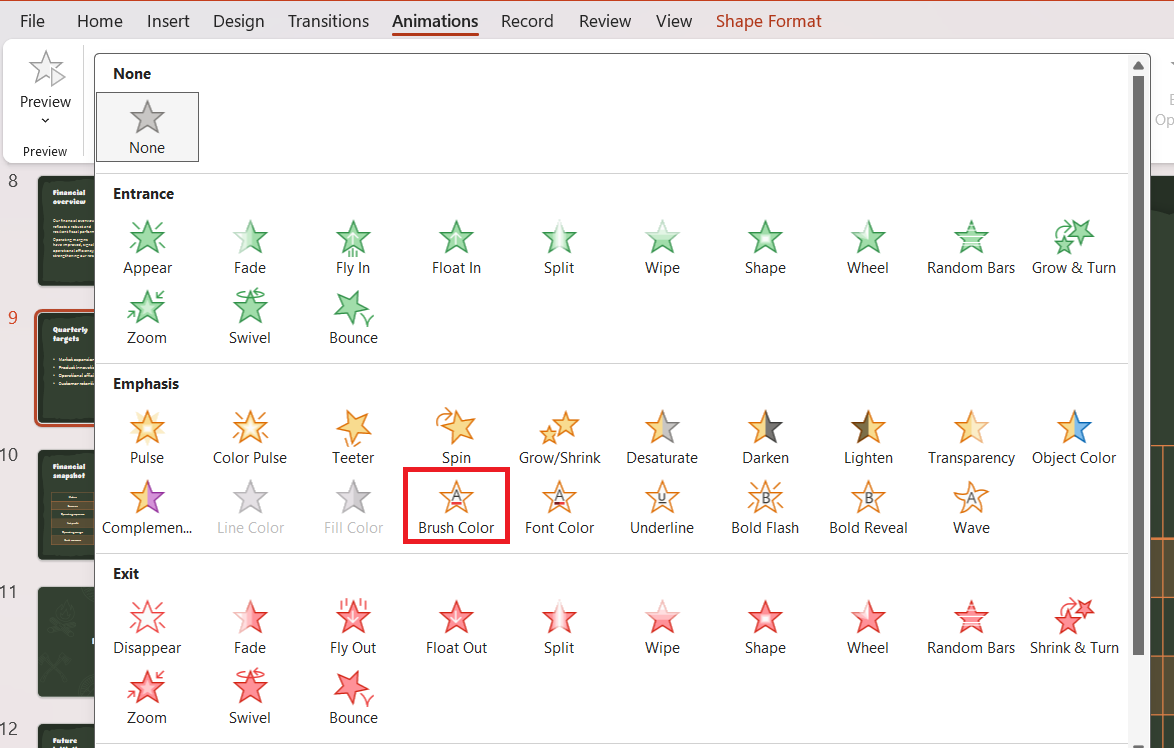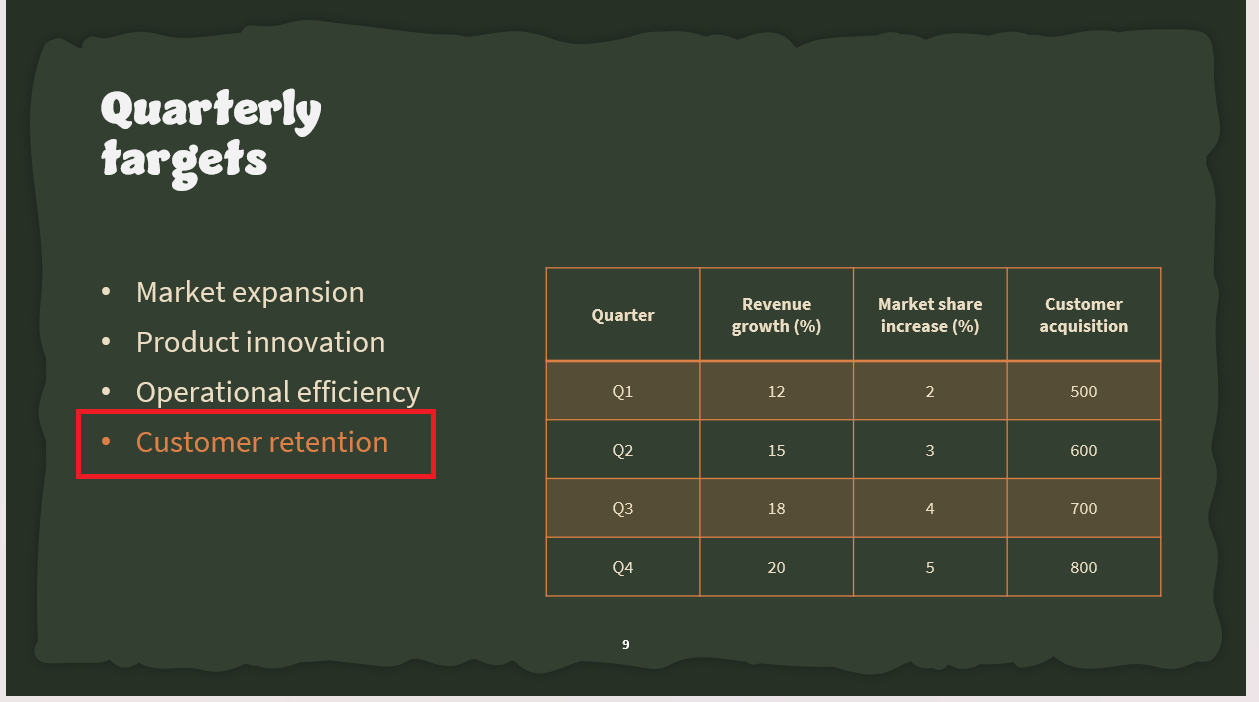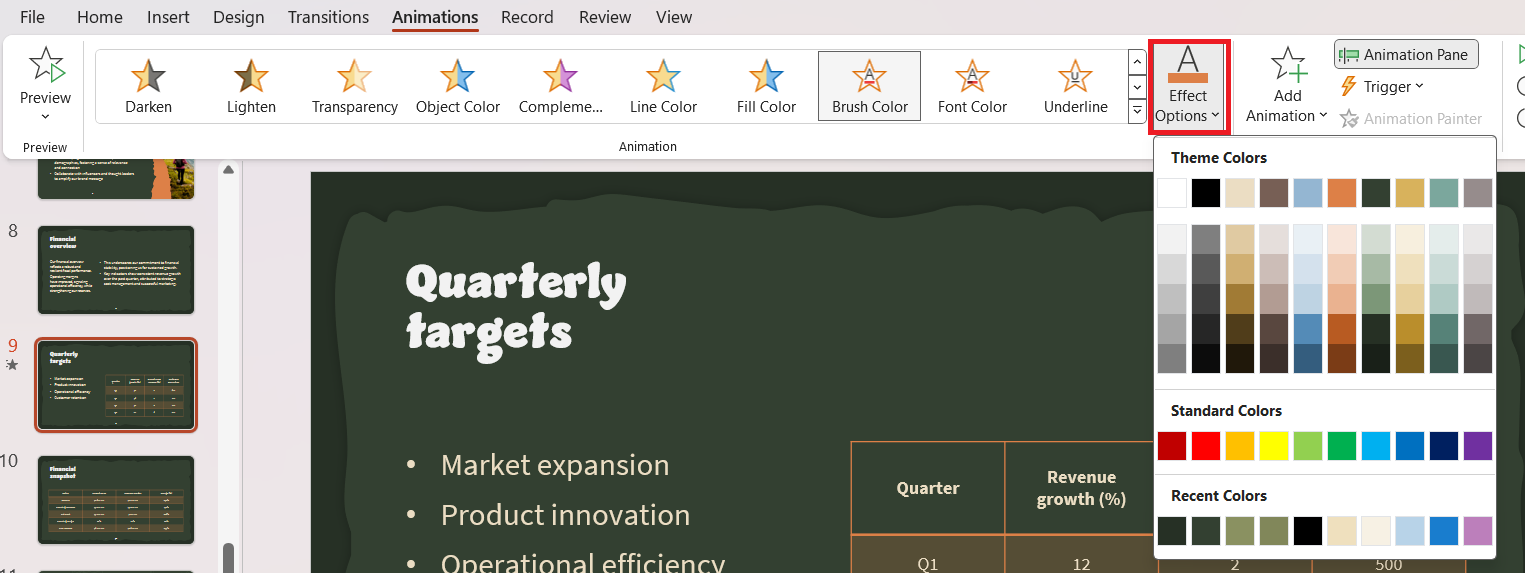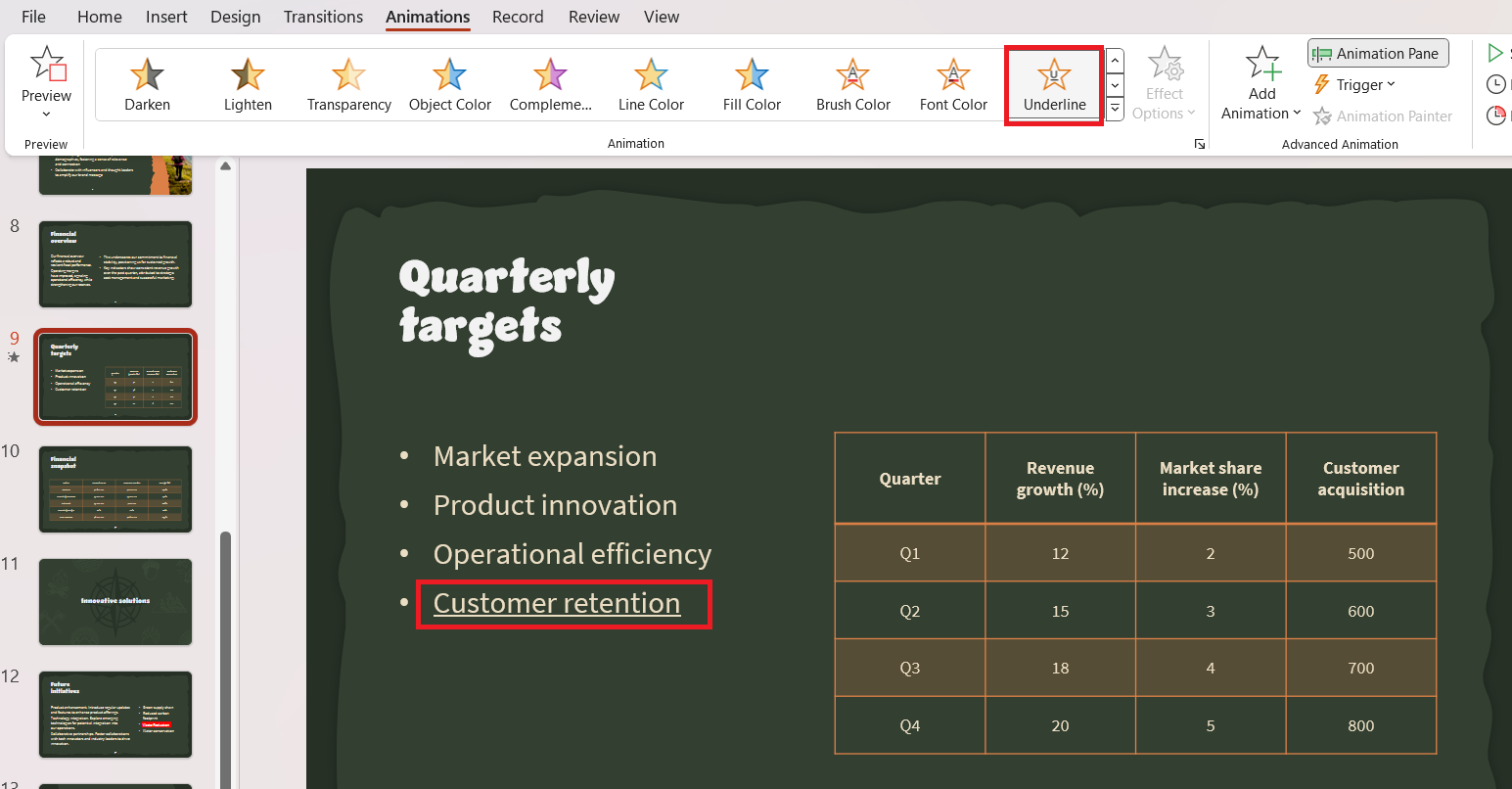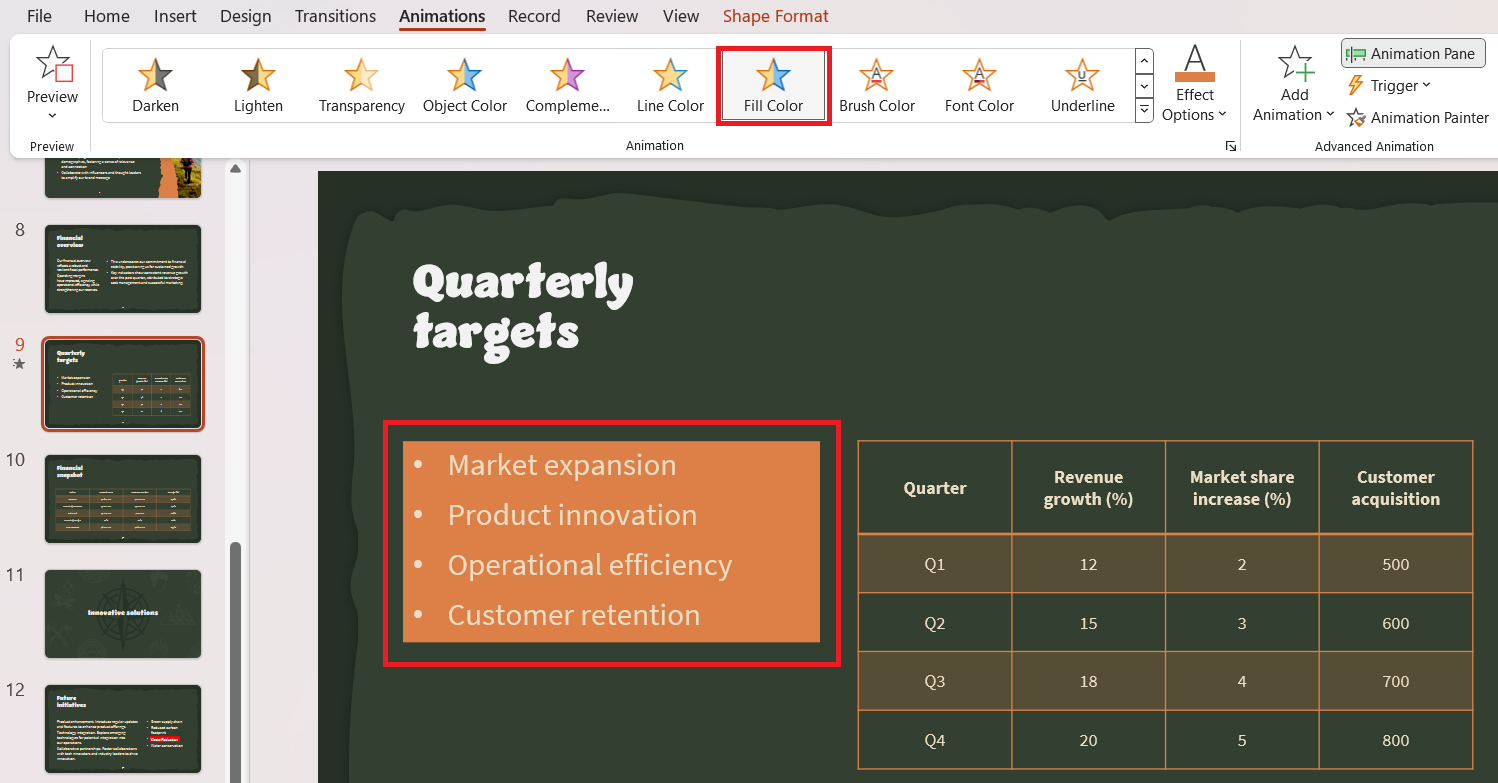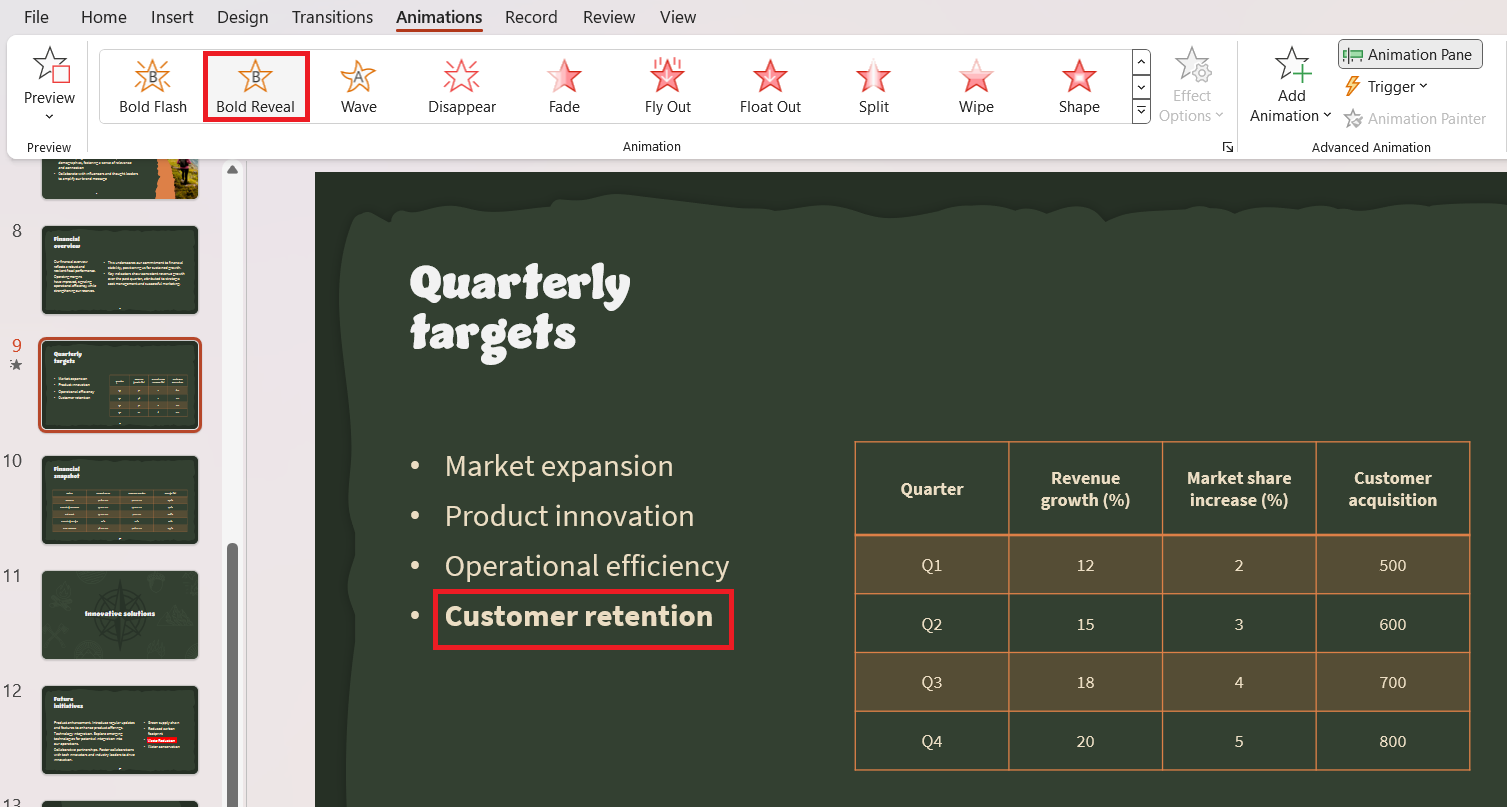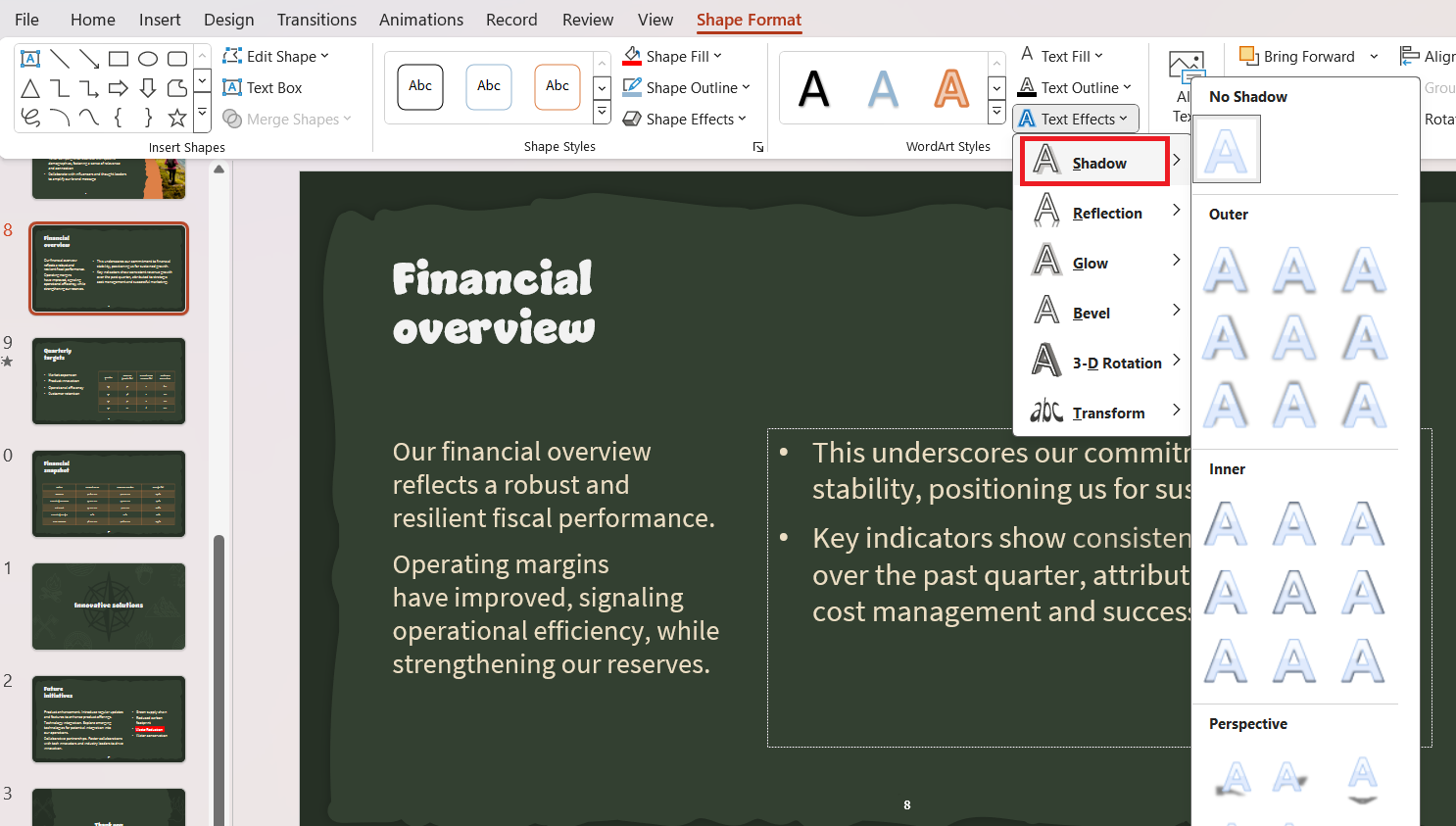Highlighting text in PowerPoint can be a powerful way to make specific information pop. Whether you’re designing a presentation for business, teaching, or any other purpose, the ability to highlight words can help ensure your audience focuses on the most critical points.
I’ll guide you through the steps to highlight words in PowerPoint, share some quick shortcuts, and explore how to emphasize other elements to make your slides stand out. Let’s dive into it!
Key Takeaways:
- Highlighting text in PowerPoint emphasizes key information and guides the audience’s focus.
- PowerPoint provides multiple methods to highlight, including the Text Highlight Color tool and using shapes as custom highlights.
- Animated highlights, such as Brush Color or underlined animations, add dynamic effects to keep viewers engaged.
- The Glow effect is an effective way to attract attention, creating a modern, eye-catching highlight.
- Customizing the Quick Access Toolbar with frequently used highlight tools saves time and improves presentation efficiency.
Table of Contents
Introduction to Mastering Text Highlighting in PowerPoint
The Importance of Text Highlighting for Effective Presentations
As a seasoned presenter, I’ve learned that highlighting text in PowerPoint is not just about adding splashes of color to my slides; it’s a strategic tool for engaging audiences. By emphasizing key points, we can guide our audience’s attention to the most relevant information, clarifying complex ideas and underscoring our message’s essence.
It’s a bit like shining a spotlight on stage – it pulls the viewers’ gaze exactly where we want it.
Exploring Different Methods to Highlight Words
Incorporating text highlights within a PowerPoint presentation can be accomplished through various methods, each with its own set of advantages. While the method we choose may depend on the version of PowerPoint we are using or the visual effect we aim for, exploring the different options allows us to add depth and creativity to our presentations.
Whether it’s through the built-in ‘Text Highlight Color’ feature or using shapes and custom animations in older editions, we expand our repertoire of tools to make complex information digestible and memorable. Every method beckons us to experiment and find the perfect balance between functionality and aesthetic appeal.
Techniques to Highlight Words in PowerPoint
Utilizing the ‘Text Highlight Color’ Feature
The ‘Text Highlight Color’ feature in PowerPoint is a straightforward and effective way to accentuate parts of our presentations. Here’s how we utilize it: we navigate to the Home tab and select the arrow next to ‘Text Highlight Color,’ then choose our preferred shade.
The selected color becomes visible on the button, transforming the mouse pointer into a highlight marker when we hover over the text.
We need to click and drag over the text we wish to underline with color.
If it’s time to stop highlighting, we simply select ‘Stop Highlighting’ from the same menu or tap the Esc key.
I find this feature particularly handy when I want to highlight multiple sections continuously without interruption.
Creative Workarounds for Older PowerPoint Editions
We can draw attention to text using two main alternative techniques: inserting a text box and applying the Shape Fill tool, as well as utilizing custom animations.
Firstly, I place a text box via the Insert menu, carefully positioning it around the text I want to emphasize.
Then, the Shape Fill tool, found under the Format tab in Drawing Tools, allows us to give the text box a vibrant back color that stands out, akin to a highlighter streak.
These workarounds may not be as swift as the Text Highlight Color tool, but they still effectively draw our audience’s eye to the key elements of our slides, ensuring our message hits home.
Enhancing Presentations with Custom Animation Effects
Inserting Brush and Font Color Animations
To create dynamic presentations, I often turn to Brush and Font Color animations. By using these animations, we can set a text color to change over time or with a particular action, such as a swipe effect. To insert them, we start by selecting the text, moving to the Animations tab, and choosing Brush Color in the Emphasize section.
This option paints a new shade across our text, letter by letter, enabling us to captivate our audience with each word.
For Font Color animations, they morph the text’s color gradually, shifting emphasis smoothly through the sentence. After applying either animation, I delve into the Effect Options to select the colors and refine the animation’s specifics to my liking.
These customizable animations add nuance and rhythm to presentations, allowing key points to resonate more deeply with our viewers.
Adding Underline, Fill Color, and Bold Reveal Animations
To make our text jump off the screen, animating an underline can serve as a simple yet effective technique. The Underline animation slowly draws a line beneath the text, immediately signaling important content. After applying this animation, we sadly cannot change its color; nonetheless, it remains a potent tool for drawing attention.
Furthermore, the Fill Color animation, which I often use for a dramatic effect, fills the background of the text box, not the text itself. This method requires us to resize the text box accurately to ensure the highlight appears as intended. It’s a striking approach to maintain the focus on the text while not altering it directly.
Lastly, the Bold Reveal has proven to be a subtle, yet impactful way to underscore significance. It progressively transitions text into a bold format, fortifying the message across the slide.
Glowing Text for Attracting Audience Attention
Aptly named, the Glow effect makes text elements pulse with light, creating an arresting visual that commands attention. To apply it, I begin by selecting the text in question, then I explore the Text Effects options within the WordArt Styles group on the Shape Format tab.
A click on Glow unfurls a spectrum of colors, including theme colors perfect for maintaining brand consistency.
The Glow effect is a modernized highlighting tool that brings an edgy, contemporary feel to any presentation, inviting our audience to stay focused right where we need their gaze.
Expert Tips on Managing Your Highlights
Quick Access to Frequently Used Highlight Methods
To expedite my workflow in PowerPoint, I customize my Quick Access Toolbar with the highlight methods I use most often. It’s simply a matter of right-clicking on the Text Highlight Color option from the Home tab and adding it to the Quick Access Toolbar.
For more advanced users who favor shape-based highlights or certain WordArt effects, the same right-click on these features will also pin them up top for immediate use.
This personalization saves precious seconds, especially when under the constraint of tight deadlines or during live presentations. Having these tools at our fingertips allows us to focus more on the content and less on navigating menus.
Frequently Asked Questions (FAQs)
How do you highlight typed words?
To highlight typed words in PowerPoint, select the text you want to highlight, then go to the “Home” tab and choose a highlight color from the “Text Highlight Color” dropdown.
What Are Some Quick Shortcut Keys for Highlighting in PowerPoint?
PowerPoint doesn’t have a direct keyboard shortcut for highlighting text like Word, but you can use Alt + H, I to open the highlight color menu quickly. Once it’s open, you can select a color with your mouse or arrow keys.
Can You Highlight Non-Continuous Segments of Text in One Go?
No, PowerPoint currently doesn’t allow highlighting multiple non-continuous text segments at once. You’ll need to select and highlight each segment individually.
How do you highlight elements in PowerPoint?
To highlight elements like shapes or images, use the “Format” tab to adjust the color, outline, or effects, or add a glow or shadow effect to make elements stand out.
How do you highlight and comment in PowerPoint?
To add comments, go to the “Review” tab and select “New Comment.” You can place comments anywhere on a slide, and to emphasize specific text or elements, use the highlight options or formatting adjustments.
John Michaloudis is a former accountant and finance analyst at General Electric, a Microsoft MVP since 2020, an Amazon #1 bestselling author of 4 Microsoft Excel books and teacher of Microsoft Excel & Office over at his flagship MyExcelOnline Academy Online Course.


